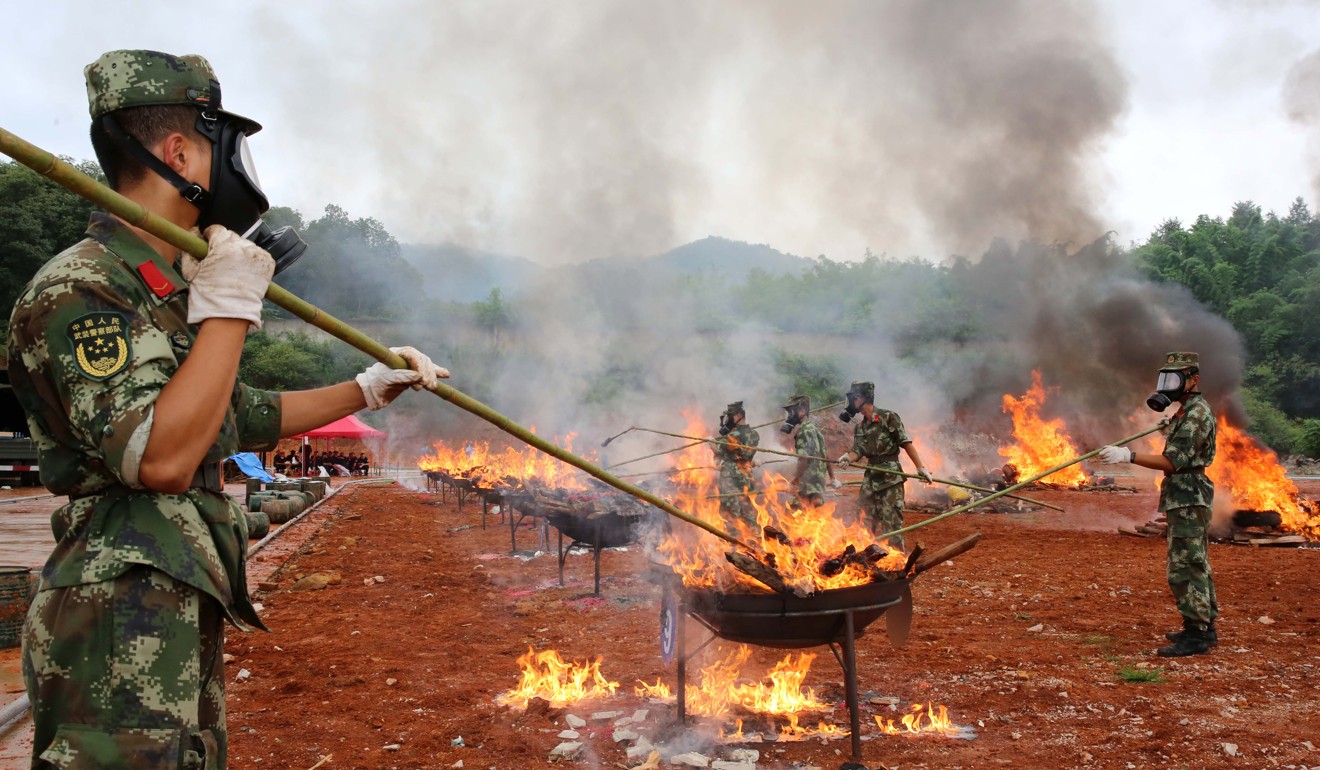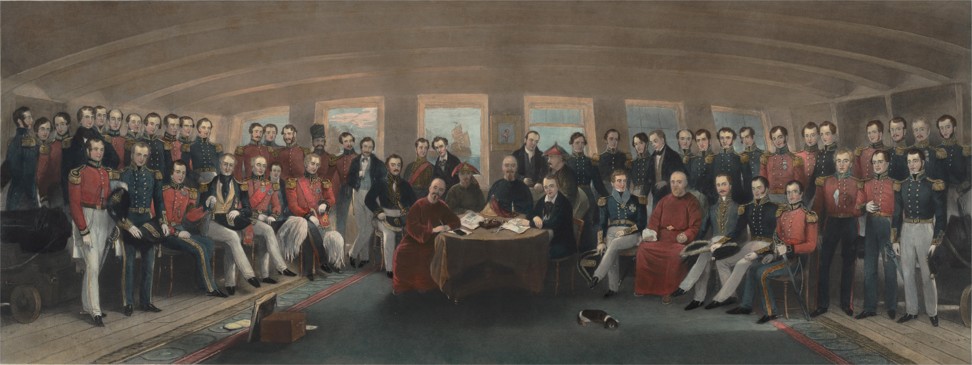
How the US opioid crisis and trade dispute with China have echoes in 19th-century history
David Dodwell says Donald Trump is justified in declaring war on the opioid crisis but he cannot expect quick results to a problem 150 years in the making

I find it difficult to get my head around America’s opioid crisis. It is hard not to be alarmed by reports of more than 300,000 Americans dying since 2000 from abuse of prescription opioids – more than deaths in car accidents, or from gun violence.
After declaring a national emergency last October, with substantial new funding to tackle the crisis, President Donald Trump said at a rally in March: “Together, we will end the scourge of drug addiction in America once and for all. We will win. We will beat it. We’ll be kind. We’ll be loving. We’ll do whatever we have to do. But we’re going to win.”
Brave words, but scratch the surface, and the issue becomes murkier, with some fascinating serendipitous side stories that link frequently back to China. Awful though the story of opioid abuse is, it seems it is neither especially unusual, nor new.
Certain aspects of the crisis seem genuinely new. A large proportion of victims are men in predominantly white parts of middle America. Much of the problem comes not from underground criminal gangs, but from painkillers being prescribed by the country’s doctors. And the drug Fentanyl – mostly imported from China, 50 times stronger than morphine, and more typically useful in knocking out a rhinoceros with toothache than a person with back pain – is playing an alarming role.
But much of the problem has ancient roots – and many intriguing connections to China. While it was Britain that played the largest role in addling China’s population with opium up to and through the Opium Wars, American merchants like Russell & Company were plentiful in grabbing a share of the profits from the opium trade.

What was the East India Company’s motive for plying opium on China? China’s persistent trade surpluses, of course. Britain wanted China’s tea, silk and porcelain, but China seemed to want nothing – leading to steady depletion of Britain’s silver reserves. Funny, isn’t it, that China’s trade surpluses should again 200 years later be so infuriating the 20th century’s hegemon?
Funny, isn’t it, that China’s trade surpluses should again 200 years later be so infuriating the 20th century’s hegemon?
It was India’s first governor general Warren Hastings who struck upon the idea of hooking China’s population on opium to eliminate the country’s massive trade surplus.
From annual sales of just 200 chests (about 54kg per chest) in 1729, sales grew steadily to around 60,000 chests when opium trading was legalised after China’s defeat in the second Opium War. It eventually peaked in the 1880s at around 80,000 chests. By then, over 12 million Chinese were addicts, and China’s “century of humiliation” was well under way. I wonder whether there are moments when Trump’s trade team is not frustrated that such a neat trading ruse cannot be rediscovered today to bring China’s present burgeoning trade surplus to heel.
But why does this distant ignominious period in history link to today’s American opioid crisis? Because it was the destitution resulting from the crippling of China’s economy that pushed so many Chinese to emigrate to the US to find work during and after the 1849 gold rush – taking their opium pipes with them.
Many in the US believed that opium smoking would encourage prostitution and other crimes, while fears about unemployment among white Americans fed into an anti-Chinese campaign that led to the Chinese Exclusion Act and a 10-year moratorium on Chinese immigration. It seems there is nothing new under the sun as the US Congress today looks at barring Chinese investment, and scrutinising the loyalties of Chinese working or researching in the US.
Whatever Trump’s alarms, and the reasonable concern over the explosion of opioid abuse, the US’ problems are less exceptional than he implies – and nowhere near the awful scale of China after the Opium Wars.
The UN Office on Drugs and Crime World Drug Report 2018 says that 275 million people worldwide used drugs at least once in 2016, with 31 million suffering drug use disorders, and just one in six receiving treatment. At least 450,000 people died in 2015 because of drug use; 167,750 were a direct result of drug use disorders, in most cases involving opioids. The organisation’s 2017 report said 28 million work years (called “disability adjusted life years”) are lost every year because of premature death or disability.
The US is unusual in the massive role played by doctors, pharmaceutical companies and drug wholesalers who are overprescribing opioids
But the US is not up there among the most serious casualties. The lion’s share of heroin and opiates are grown – and consumed – around Afghanistan and most victims are in Central Asia. Even among developed economies, the proportion of drug addicts in the population in the US is far lower than in the UK or Italy.
However, the US is unusual in the massive role played by doctors, pharmaceutical companies and drug wholesalers who are overprescribing opioids like oxycodone initially as pain killers. In 2007, Purdue Pharma, producer of OxyContin, paid US$634 million in a settlement with Federal prosecutors for its role in fuelling the crisis.
Trump may be right to declare an emergency, but he is wrong to foster expectations that America’s drug abuse problem can be tackled quickly. It is a problem with a 150-year history, and is not going to be resolved any time soon – but hopefully will never gift the US with its own “century of humiliation”.
David Dodwell researches and writes about global, regional and Hong Kong challenges from a Hong Kong point of view
